














New showrooms now open at Bypass Nurseries, Capel St Mary and Glasswells, Ipswich
















New showrooms now open at Bypass Nurseries, Capel St Mary and Glasswells, Ipswich


Colchester City Council has been officially recognised as a Council of Sanctuary by the City of Sanctuary Local Authority Network. This recognises the council’s commitment to fostering a culture of welcome, inclusion, and integration support for people seeking sanctuary.
Colchester has a history of providing support to people seeking safety from conflict and persecution. Today, the city is home to a range of communities who play a valued role in local life.
The council’s Resettlement Team, in partnership with local organisations such as RAMA, Essex Integration, African Families in the UK, Bangladeshi Women’s Association, and the Colchester Caribbean Group, helps newcomers settle into and contribute to life in Colchester. The team also leads key community-led housing initiatives, such as Homes for Ukraine and Communities for Afghans, and organises moments of solidarity, including marking the third anniversary of the Russo-Ukrainian
war with an event honouring Ukraine’s resilience.
The Mayor of Colchester, Cllr Michael Lilley, said: “I am delighted we have been awarded City of Sanctuary status, recognising our proud history and ongoing commitment to supporting those fleeing conflict and persecution.”
Colchester City Council Leader, Cllr David King, added: “Our city has many communities, and it is vital we minimise the impacts of migration, and ensure we work together, to encourage cohesion, connection, and integration.
Maria Wilby, Director of RAMA, said: “Colchester’s award is truly deserved. Their work benefits not only those vulnerable migrants in need of support but also the general population. When the most vulnerable are being looked after well then there are more capacity and resources for us all. We are proud to work alongside such a forward-thinking council.”



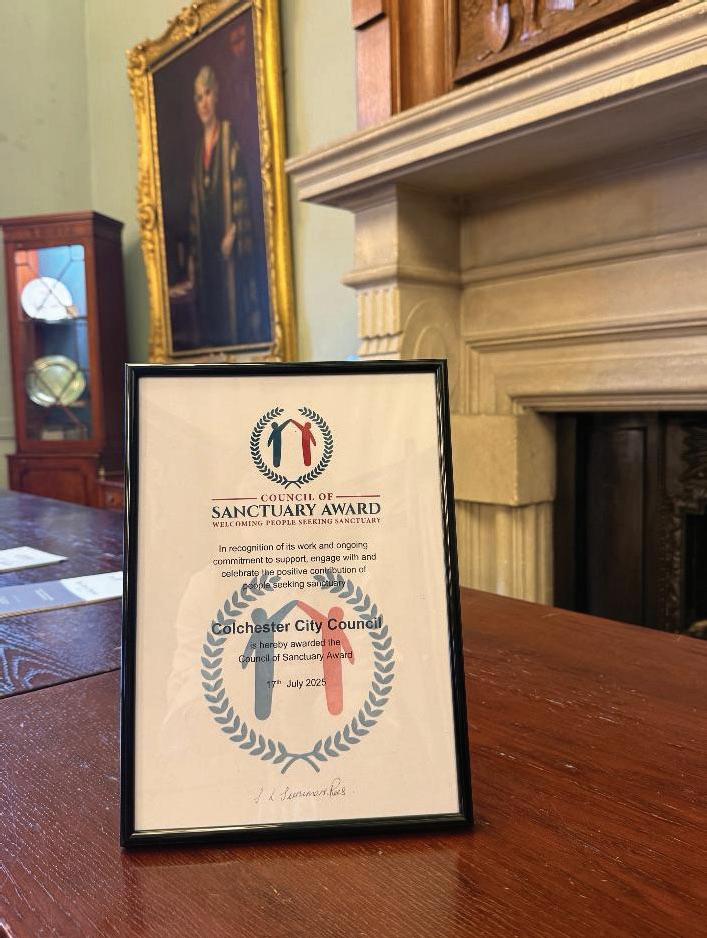
Dr (HC) Rachel Walton, Co-founder of African Families in the UK, commented: “At AFiUK, we celebrate Colchester City Council’s City of Sanctuary Award as a powerful recognition of their commitment to welcoming and including all communities. This achievement reflects the values we share – creating
a city where everyone feels safe, valued, and able to belong."
Colchester remains committed to being a place of welcome. The council will continue to foster an inclusive environment for all who wish to make Colchester their home.






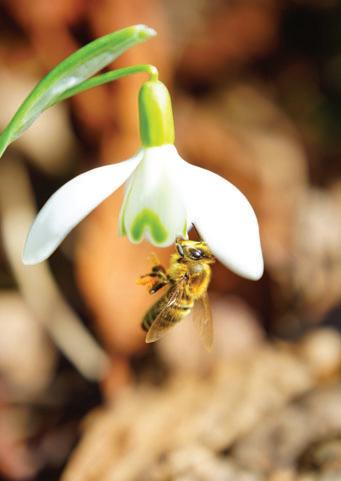









































































































































































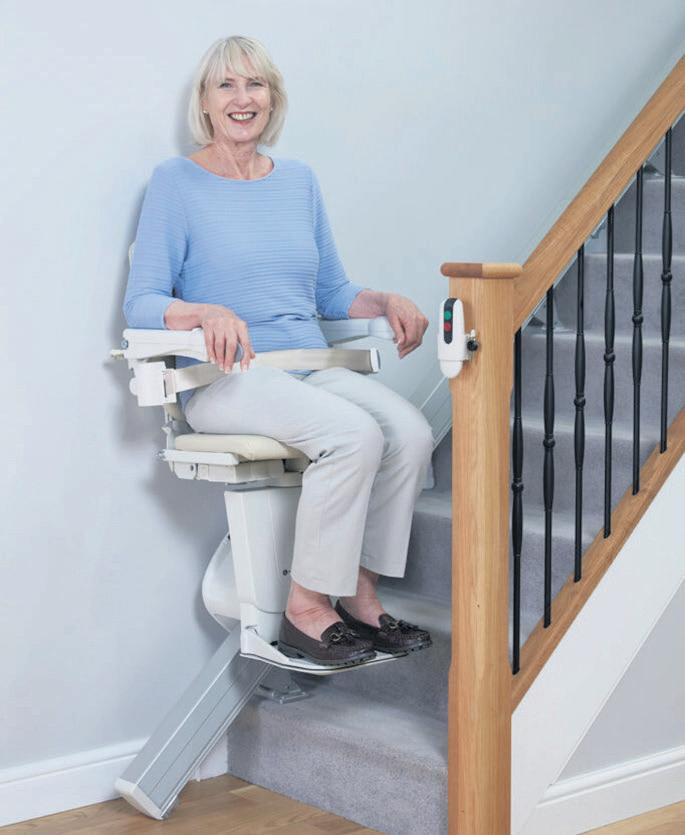









Although it was first published in 1959, The Haunting of Hill House is a timeless, chilling, cerebral masterpiece that redefined the haunted house genre. With elegant prose and psychological nuance, Jackson constructs not just a ghost story, but a deeply unsettling exploration of isolation, identity, and madness. This is the opposite of a gore-fest and it’s the novel’s restraint that gives it a lasting power. Jackson doesn’t just haunt with spectres, she haunts with
suggestion, silence, and the fragility of the human mind.
The story follows Eleanor Vance, a fragile and lonely woman who joins a small team invited by Dr. Montague, a scholar of the paranormal, to spend the summer investigating Hill House - an estate with a dark and twisted history. Alongside Eleanor are Theodora, a bohemian and enigmatic artist, and Luke, the future heir to the house. As the group settles in, strange phenomena begin to manifest: unexplained noises, cold spots, and messages scrawled on walls. But it's Eleanor’s growing attachment to the house - and the question of whether the house is possessing her or merely reflecting her own inner turmoil - that drives the novel’s psychological terror. Is Hill House truly haunted, or is Eleanor simply unravelling? The Haunting of Hill House isn’t just a ghost story - it’s a mirror held up to the mind’s most shadowy corners, and a gothic classic that lingers long after the last page.
This Lie Will Kill You by
Chelsea Pitcher
This Lie Will Kill You is a gripping YA thriller that blends suspense with high-stakes drama. The story follows five teenagersJuniper, Ruby, Parker, Brett, and Gavin - who are invited to a mysterious mansion to compete for a $50,000 scholarship. However, they quickly realise they've been lured into a deadly game designed to expose the truth about a fatal incident that occurred a year prior.
As the night unfolds, secrets unravel, and each character is forced to confront their past actions and the lies they've told. The narrative alternates between the present and flashbacks, gradually revealing the events leading up to the tragedy. Each revelation adds a new layer of complexity to the story.
The story is intricately plotted and the atmosphere builds through fast-paced narrative and unexpected twists, delivering a story that's both engaging and
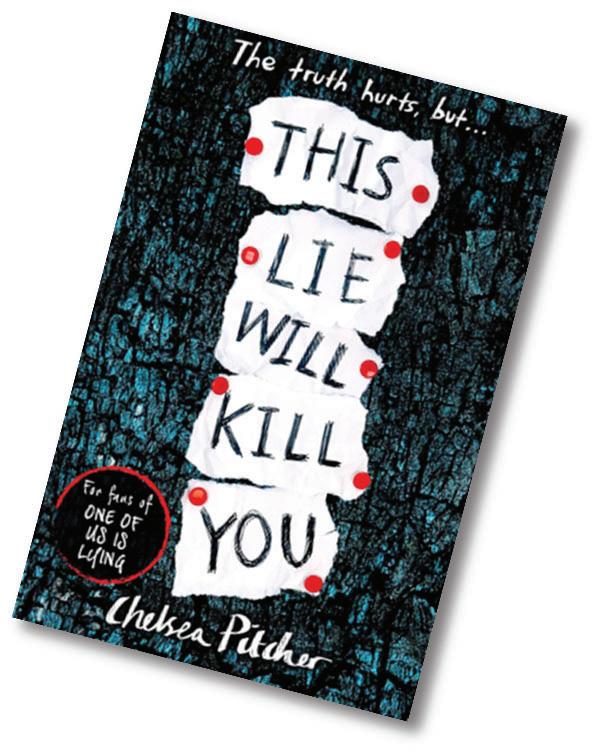
thought-provoking.
This Lie Will Kill You is a compelling read for fans of YA mysteries and thrillers, offering a dark exploration of guilt, deception, and the consequences of our choices.
By Tash Donovan
Your regular gift of just £5 a month could go towards supporting young cancer patients through our Care Packages, Age-appropriate Rooms in hospitals and Research.


Not only will you be giving a brighter future to teenagers and young adults with cancer but also a future to bees, wildlife, and the environment.

As a thank for your monthly donation, you will receive Your very own handmade, native bag of Beebombs to sow






on how your donation is























Many of us have walked out of the salon disappointed, wondering why our new cut doesn’t match the picture in our heads. The good news is that a little preparation and clear communication with your hairdresser can greatly increase the chances of leaving happy.
Bring Visual References - Words like “short” or “layered” can mean different things to different people. Bringing photos is the best way to show what you want. Choose realistic examples—styles that suit your hair type, face shape, and lifestyle.
Be Honest About Your Hair - A style that looks great on someone with thick, straight hair may not translate well to fine curls. Talk openly with your hairdresser about your natural texture, growth patterns, and how much time you’re willing to spend styling each day. Choosing a hairdresser with a similar hair type to your own increases the chances they will understand what you are dealing with.

Discuss Maintenance - Some cuts need regular trims or daily heat styling. If you prefer low-effort hair, say so at the start. Your stylist can suggest alternatives that achieve a similar look with less upkeep.
Ask Questions - Don’t be afraid to clarify what the hairdresser plans to do. Ask how much length will be cut, whether layers are blended, or how the fringe will fall. A good stylist will welcome questions and explain the process.
Keep Expectations Realistic
- Perhaps most importantly, remember that no haircut can completely change hair type or face shape. A skilled hairdresser can enhance your features, but the best results come when your expectations match what’s achievable.
By Sarah Davey
1 After breaking law, Malawi cell holds one Scottish hero (7,7)
9 Ridicule a politician, a silly person outwardly (7)
10 Right English striker for return game (7)
11 Seize most of returning craft (4)
12 E.g. Ali could be quick-moving (5)
13 Backing some officials but not of the clergy (4)
16 Pompous, old and plump (7)
17 Caught rector misbehaving? That’s right (7)
18 Discharge former partner on Greek island (7)
21 Internet pages revealing location of spider’s trap? (7)
23 Give sharp edge to sweet stuff mostly (4)
24 After short time woman gives the real facts (5)
25 Left Dover? (4)
28 Pious Tina sadly is taken in by cunning (7)
29 Recluse from Eire met wacko (7)
30 Showed grief at serene abbot’s ruin (4,4,6)
DOWN
1 Age-old ice show’s slammed as a pointless exercise (4-5,5)
2 Back trouble initially left untreated by doctor in the past (7)
3 One against religious image (4)
4 Coped with fellow advanced in years (7)
5 Bill staggered Cyril, showing fibre (7)
6 Weak material (4)
7 Get a new bed first for residence (7)
8 Electroconvulsive therapy is what hairdresser offers! (5,9)
14 Quilt from Venice originally seized by performing pair (5)
15 Investigation puts pressure on awful bore (5)
19 Entrust study to Castro mostly (7)
20 Played any role in the initial stages (5,2)
21 Googie fades away (7)
22 Chap in Iowa fighting battle (3,4)
26 Restore Test ground (4)
27 Stout worker needs run (4)








There’s a lot to be said for Autumn, which is often overshadowed by the hot and heady days of summer and the festive sparkles of winter, but it’s arguably the perfect time to step outside. There’s a special kind of magic in the air: crisp mornings, low golden light, and trees putting on a dazzling display before the leaves drop and winter hits. For walkers, cyclists, or anyone who enjoys a ramble, autumn is a gift.
Contrary to the gloomy stereotype,
autumn weather in the UK is often very pleasant. The sun sits lower in the sky, casting long, honeyed beams that make even the most familiar landscapes look painterly. Days can be mild and bright, with a freshness that makes outdoor activity invigorating rather than sweaty. There’s nothing quite like the crunch of fallen leaves underfoot while shafts of sunlight filter through copper branches above. Of course, there’s always the chance of a chill breeze or a surprise shower, but that’s nothing a good waterproof
jacket and a few well-planned layers can’t handle. In fact, being wrapped up snugly makes a flask of coffee or a pub stop afterwards all the more rewarding.
So where should we go to get the best out of autumn?
Well, any local park is a good start. Many places even offer organised autumn walks.
But if you want to venture further afield for a weekend break maybe, we’re a bit spoiled for choice in the UK.
Wales - Head to Snowdonia, where ancient oak woodlands (actually Celtic rainforests) glow with colour beneath towering peaks. The trails around Betws-y-Coed or the slopes of Cadair Idris are especially atmospheric in misty autumn light. You can even go pony trekking.
Scotland - Perthshire is known as “Big Tree Country” because of its 200 000 acres of woodland. The Hermitage near Dunkeld offers a spectacular canopy of towering Douglas firs, while Loch Tummel provides sweeping
views over forests full of autumn hues. For a wilder feel, the Cairngorms combine dramatic highland scenery with golden birch forests.
North of England - The Lake District is obviously a classic, where reflections of amber woodlands shimmer on lakes like Derwentwater. Meanwhile, the Yorkshire Dales offer limestone valleys framed by native broadleaves, perfect for bracing walks followed by a cosy village pub.
South of England - Richmond Park in London becomes a russet wonderland, complete with rutting deer bellowing in the mist. Further afield, the New Forest is enchanting in autumn, its ancient oaks and free-roaming ponies set against carpets of fallen leaves.
Autumn is the season that invites us to slow down and notice the world in transition. It’s a season for layering up, stepping outside, and letting the colours, the light, and the landscapes remind you why the outdoors in the UK should never be underrated.
By Gemma Brown
You don’t need to be a mechanic to take care of your car. A few basic maintenance tasks can save money, improve safety, and prevent breakdowns. Here are five that every driver should master:
Checking Tyre Pressure and Tread - Underinflated tyres reduce fuel efficiency and can be dangerous. Use a pressure gauge to check regularly against the manufacturer’s recommended levels (found in the handbook or on the driver’s door frame). Also, ensure tread depth is above the legal minimum of 1.6mm—an easy check with a 20p coin.
Topping Up Oil - Engine oil lubricates and protects vital components. To check, pull out the dipstick, wipe it clean, reinsert it, then check the level. If it’s low, top up with the correct grade of oil specified for your car.
Blades - Clear visibility is essential. If your wipers smear or squeak, they’re worn out. Replacement blades are inexpensive and usually click straight into place with minimal tools.
Refilling Screen Wash - Running out of screen wash can leave you driving blind in bad weather. Simply open the washer reservoir under the bonnet and top up with screen wash fluid (not plain water, which may freeze in winter).
Changing a Bulb - From headlights to brake lights, working bulbs are vital for safety and legality. Most older cars allow straightforward bulb replacement though in some newer models the entire unit has to be swapped out which is more expensive, but your manual or a
good YouTube video will show you how to do it.
By mastering these simple checks and tasks, drivers can avoid unnecessary garage visits, keep their cars running smoothly, and stay safer on the road
By Tom Hancock

Prep time: 25 minutes
Cooking time: 12 minutes
Makes 20 cookies
Ingredients:
70g butter softened
50g peanut butter
150g golden caster sugar
1 egg
1 tsp vanilla extract
180g plain flour
½ tsp bicarbonate of soda
Generous pinch of salt
20 Maltesers, Rolos, Peanut butter cups or Lindor chocs
100g milk or dark chocolate
chopped
Pack of icing eyes

Method
Preheat the oven to 180C/160C fan/gas 4. Line two baking sheets with greaseproof paper / baking parchment.
Cream the butter, peanut butter and sugar together until very light and fluffy, (you can use a mixer or do it by hand) then beat in the egg and
vanilla. Sieve the flour, bicarb and a pinch of salt together and fold into the creamed mixture.
Scoop 18-20 tbsps of the mixture on to the baking sheets, leaving enough space between each scoop to allow for spreading. Make a thumbprint in the centre of each cookie. Bake for 10-12



mins or until firm at the edges but still soft in the middle –they’ll harden a little as they cool. Leave to cool on the tray for a few mins before topping each biscuit with a Malteser or Rolo etc.
Transfer to a wire rack to cool completely.
Heat the chocolate in the



microwave in short bursts, or in a bowl set over a pan of simmering water, until it melts. Scrape the liquid chocolate into a piping bag and leave to cool a little. Pipe eight legs on to each spider, then add a pair of eyes. Leave to set.
Enjoy. Happy Halloween!



Mushrooms may not be the first thing that comes to mind when planning a garden but cultivating your own is a rewarding and surprisingly simple project. I've been enjoying a steady supply all year round since I started growing them back in 2020 (it was a Pandemic project...along with my sourdough!). As a bonus my kids were willing helpers because the results are pretty quick.
Mushrooms are nutritious, packed with vitamins, minerals, and antioxidants, and they bring earthy depth to countless dishes.
Shop-bought varieties are often limited to common button mushrooms, whereas growing your own opens the door to oyster, shiitake, and other more exotic species.
I started with oyster mushrooms which are one of the easiest to grow. They tolerate a wide range of conditions and can be cultivated on straw, cardboard, or even coffee grounds.
Like most amateur growers I began with a mushroom growing kit, widely available in the UK from garden centres and online suppliers. It provided everything I needed: the growing medium, called substrate, which was inoculated with mushroom spawn - the fungal equivalent of seeds. It was an excellent way to learn the process without too much technical preparation and during
lockdown that was important.
However, now I purchase mushroom spawn separately and prepare my own substrate. For example, oyster mushrooms grow well on pasteurised straw. Once inoculated, the substrate is kept in a warm, humid place until colonised by white fungal threads, called mycelium.
Mushrooms prefer cool, damp, and dark conditions which makes them perfect for basements, sheds, garages, or shady garden corners. A temperature range of 12–20°C suits most species. The most important thing is humidity, so you'll need to mist the substrate with water and cover the growing area with a plastic sheet to help maintain moisture. Unlike most plants, mushrooms don’t need light to grow, though once you get hooked (and I guarantee you will) and branch out to grow more exotic types, indirect light can encourage some varieties to fruit.
Mushrooms are usually ready for harvest within a few weeks of
fruiting. They should be picked when the caps are firm and just before the gills fully open. Harvesting is as simple as twisting them gently from the substrate.
Keep the growing medium moist but not waterlogged.
Wash hands before handling the substrate to reduce contamination.
Try different varieties once you gain confidence; shiitake grown on logs will produce harvests for several years.
My daughter describes growing mushrooms as a mysterious dark art, which makes it the perfect project for this time of year! But really it’s an accessible and fascinating branch of gardening. With minimal space and a little care, you can enjoy delicious home-grown mushrooms whenever you like.
Happy gardening, By
Rachael Leverton














If insomnia is adversely affecting your life, you should discuss this with your GP and ideally be referred to a sleep specialist. However, there are some tips from CBT-I which can be implemented at home straight away.
Keep a Consistent Schedule - Go to bed and wake up at the same time every day, even on weekends, and avoid “catching up” on sleep with long lie-ins, as this disrupts your circadian rhythm.
Restrict Time in Bed - Only spend as much time in bed as you actually sleep. If you usually sleep for 4 hours but stay in bed for 8, reset your “sleep window” to 4 hours, going to bed only when you’re tired, and getting up as soon as you wake. Gradually extend it as your sleep becomes more efficient.
Recondition Your Brain (Stimulus Control) - Use your bed only for sleep and intimacy. If you can’t fall asleep within 15–20 minutes, get up, do something calming (like

reading or listening to soft music), and return only when sleepy.
Challenge Unhelpful ThoughtsReplace anxious beliefs such as “I’ll never function tomorrow if I don’t sleep” with more balanced ones like “Even if I’m tired, I’ve coped before and I will again.” Remind yourself that rest, even without sleep, is still beneficial.
Wind Down and Relax - Create a bedtime routine: dim lights, avoid screens, and practise relaxation techniques such as deep breathing, meditation, or progressive muscle relaxation. This signals to your body that sleep is coming, especially if you repeat the same ritual nightly.
Keep a sleep diary - Track bedtime, wake time, and nighttime awakenings to help identify patterns and monitor progress. This will also help if you do get referred to a sleep specialist.
By Louise Addison
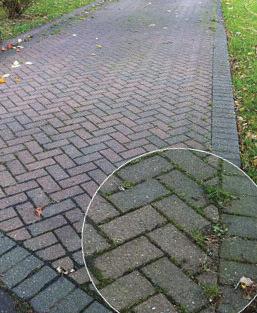




For many parents, the news that their child is thinking of leaving university is unsettling. After years of preparation, expense, and expectation, it can feel like an abrupt derailment. However, a decision to step away from higher education is rarely impulsive. Understanding the reasons behind it, and approaching the situation with empathy and openness, is key to supporting your child.
There are many reasons why a student might want to quit their course. Some discover that the subject they chose does not align with their interests or career goals. Others find the workload
or teaching style overwhelming, particularly if mental health issues such as anxiety or depression are involved. Financial pressures, homesickness, or a sense of not fitting in socially can also weigh heavily. For some, university simply does not feel like the right path; they may wish they’d chosen a more hands-on or practical route into work.
If your child raises the topic, resist the urge to react with panic or disappointment. Instead, create a safe space for conversation. Ask open-ended questions: What’s been hardest for you? Is there anything that would make

things better? Listen actively and acknowledge their feelings, even if you don’t agree with their conclusions. Emphasise that you are on their side and want to help them make a thoughtful decision rather than a rushed one. Encourage them to speak with academic advisors, student support services, or a career counsellor for additional perspectives.
Dropping out is not their only choice. Some students may be allowed to switch courses or transfer to another university better suited to their needs. Others may benefit from taking a temporary break, sometimes called a “leave of absence,” to work, travel, or focus on their health before returning to study. Clarify the financial implications of each option, including what will happen with tuition fees and accommodation contracts, before making decisions.
If after exploring the topic fully your child ultimately decides that university isn’t for them, reassure them (and yourself) that this does not mean failure. Many successful careers do not require a degree. Alternatives include:
Apprenticeships or vocational training – offering paid, practical experience alongside qualifications.
Entering the workforce – starting in an entry-level role and working up can be a rewarding path.
Professional certifications – fields such as IT, design, and finance often value specialist training.
Entrepreneurship – some thrive by pursuing business ideas or creative projects outside of academia.
Leaving university is a big step, but it is not the end of your child’s potential. By remaining calm, listening, and exploring all the options together, you can help them make an informed choice that suits their personality, ambitions, and wellbeing. Success does not follow one prescribed route; sometimes stepping off the traditional path opens the door to opportunities better suited for the individual.
By Asha Hussain
How to play Sudoku It’s simple!
Fill in the grid so that each row, column and 3x3 box, contains the numbers 1 through to 9 with no repetition.
You don’t need to be a genius. These puzzles use logic alone. Watch out! Sudoku is highly addictive.













Unwind and Cast Away at Holiday Park
Nestled in the Essex countryside and overlooking a setting for rest and relaxation.
It’s the perfect balance of a peaceful retreat while still being close to the vibrant coast and the seaside town of Clacton-on-Sea.
Beyond its location, the park has a relaxed, friendly atmosphere where holiday home owners enjoy a strong community spirit. With a programme of owners-only events throughout the season, there’s always something to get involved in.
Oaklands combines peace and convenience, with just enough facilities to make every visit enjoyable. Spend time fishing for Carp, Tench and Roach on the lake, or unwind with family and friends at The Forester’s Tavern, the welcoming hub of the park.



If you’ve ever had a poor night’s sleep you will know how awful you felt the following morning, groggy, frazzled, and ill-tempered, but what if it’s not just one or two nights? What if it’s weeks…or months?
Insomnia is the persistent difficulty in falling asleep, staying asleep, or waking too early. It is one of the most common sleep disorders. According to the American Academy of Sleep Medicine, up to 30% of adults experience shortterm insomnia, while about 10% suffer from chronic insomnia (lasting). Far from being a minor inconvenience, insomnia can have profound consequences for both physical and mental health.
Insomnia usually has multiple causes. Stress and anxiety are leading contributors, activating the body’s “fight or flight” response, and raising levels of cortisol and adrenaline that make it hard to relax. Lifestyle habits also play a role: irregular sleep schedules, late caffeine consumption, or excessive screen exposure can all disrupt our circadian rhythms. Medical conditions such as chronic pain, asthma, and gastroesophageal reflux disease (GERD) may keep people awake at night. Additionally, certain medications - including some antidepressants, steroids, and blood pressure drugs - list insomnia as a side effect. Age is another factor; older adults often
experience lighter, shorter sleep due to natural changes as we age.
The effects of chronic insomnia extend well beyond fatigue. Research links long-term sleep deprivation to impaired cognitive function, memory loss, and mood disorders such as depression. Physiologically, it is associated with increased risk of hypertension, cardiovascular disease, obesity, and type 2 diabetes; it weakens the immune system and increases inflammation.
Managing insomnia often requires a combination of behavioural and medical strategies. Firstline treatment typically involves cognitive behavioural therapy for insomnia (CBT-I), which has strong evidence for effectiveness. CBT-I addresses unhelpful sleeprelated thoughts, encourages stimulus control (reserving the bed only for sleep and intimacy), and establishes consistent routines.
Lifestyle adjustments such as reducing caffeine, limiting alcohol, exercising regularly, and practising

When you picture a witch, chances are you imagine a cackling figure streaking across the moonlit sky on her broomstick, her tall black hat swaying in the wind, and a black cat riding pillion. But why? How did we all end up agreeing that this is a witch?
Well, the mythology of witches is a quirky patchwork of folklore, superstition, and just a pinch of theatrical flair.
First the broom Brooms and witches go together like...Harry and Voldemort. In the Harry Potter stories, witches and
wizards even play the fictional sport of Quidditch on brooms. But if you were a witch, why would you enchant a broom? Why would this be your preferred mode of transport and not something more comfortable... like an armchair?
The origins of broom-riding actually stem from medieval Europe. Farmers used brooms, or besoms, in fertility rituals. They would jump over them, or leap astride them to encourage plentiful crops. When combine with tales of ointments and flying potions, suddenly the broom became a launchpad for the imagination, and
relaxation technique also help. Exposure to natural light during the day and avoiding screens at night supports the body’s circadian rhythm.
In some cases, medical intervention is appropriate. Sedative-hypnotic medications such as zolpidem or benzodiazepines are used less frequently now because of the risk of dependency. Newer options include melatonin receptor agonists and low-dose antidepressants like doxepin. Doctors increasingly recommend combining medication with CBT-I rather than relying solely on drugs.
Insomnia is more than an occasional restless night - it is a condition with serious health implications if left untreated. Understanding its causes, recognising the long-term risks, and seeking appropriate treatment, whether behavioural, medical, or both, can restore restorative sleep and protect overall wellbeing.
By Louise Addison
over time, storytellers transformed them into enchanted airborne objects, inextricably linking witches and humble cleaning tools forever.
What about the pointed hat?
The tall, pointed black hat is another curious detail. Historians suggest it may have been borrowed from real-life headwear in the Middle Ages. Pointed hats were once fashionable in parts of Europe, particularly among wealthier women. Later, as the witch craze spread, the hat’s unusual shape made it easy fodder for caricature. In woodcuts and plays, artists exaggerated its height to make witches seem more either more sinister or more ridiculous, depending on the context. Add a bit of dramatic black, the colour of mystery and mourning, and ta-da, the perfect headgear for a woman dabbling in the dark arts.
And how did black cats get involved?
No witch would be complete without her feline sidekick. Cats in general have long been creatures of superstition, straddling the line between companion and eerie omen. Black cats, in particular,
were often seen as unlucky in Europe. Their ability to silently slink around at night gave them an aura of otherworldliness. Folklore suggested witches could communicate with these creatures or even transform into them to sneak about unnoticed. The partnership stuck, and today it’s hard to imagine a witch without her furry accomplice.
What’s delightful about all these symbols is how they’ve evolved. What once carried dark connotations of sorcery and danger has become playful and festive. Modern Halloween witches sport broomsticks and hats as a kind of whimsical uniform, while black cats are no longer feared (though sadly they are the kitties most often overlooked in rehoming shelters so maybe some folklore still clings to them).
It seems witches are actually less terrifying spectres and more a collage of centuries of myth, fashion, and a healthy dose of imagination.
Happy Halloween
By Sarah Davey

The waters around the property market may be choppy, but with the Michaels crew at the helm, we’ll get you to where you really want to be... simply pop in or call our Colchester office to arrange a free mortgage health check and to register with us for updates on property prices and interest rates today.